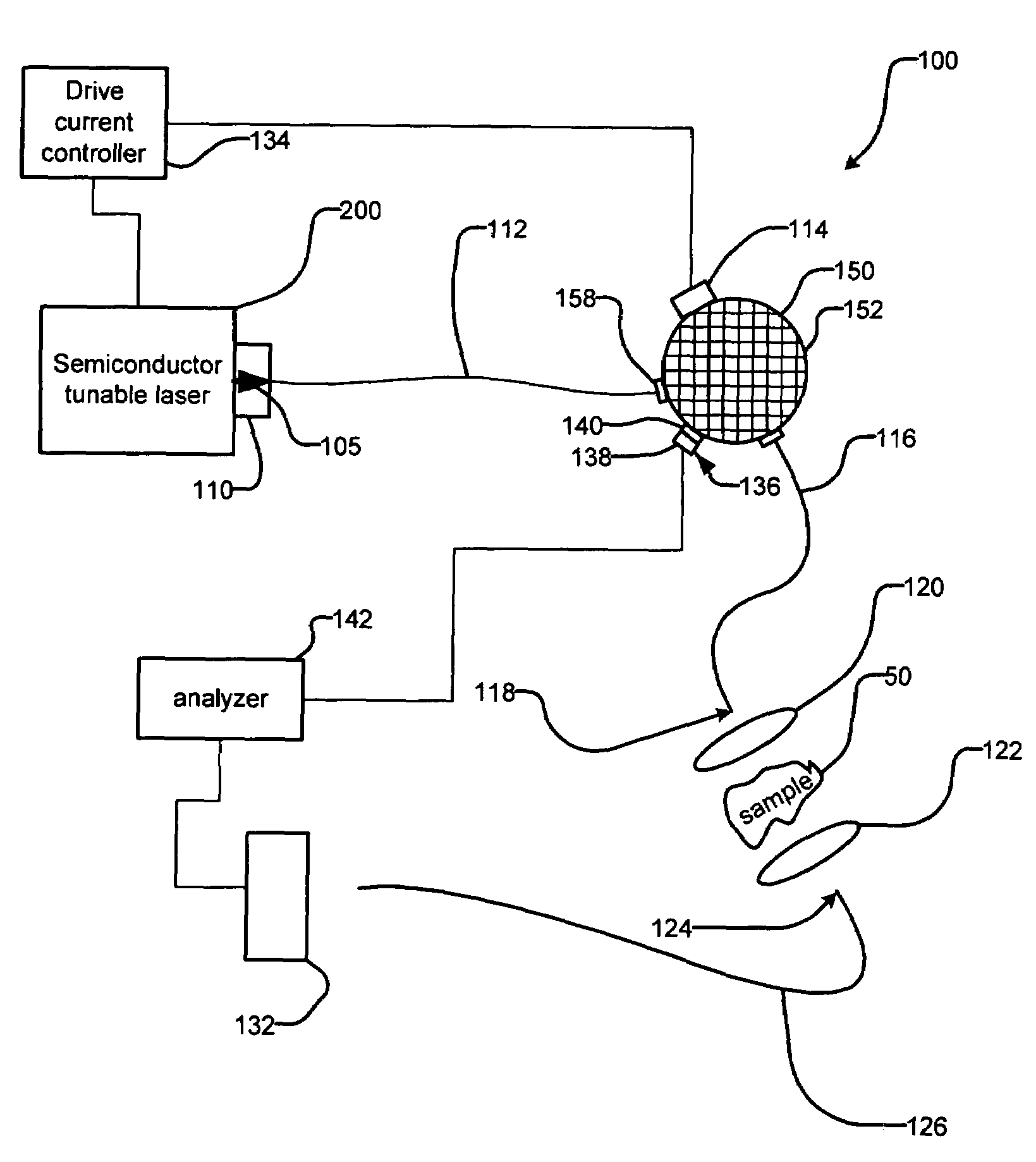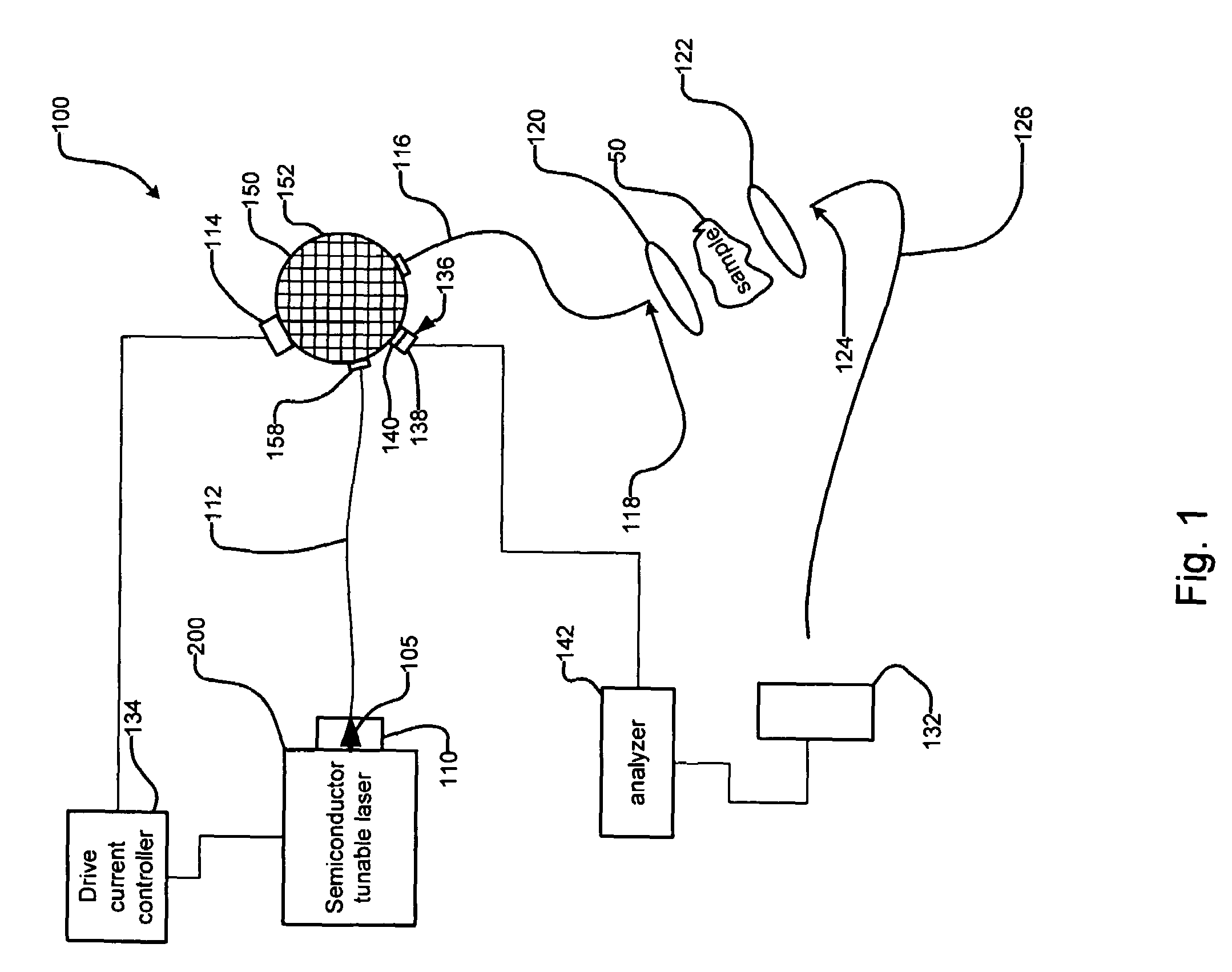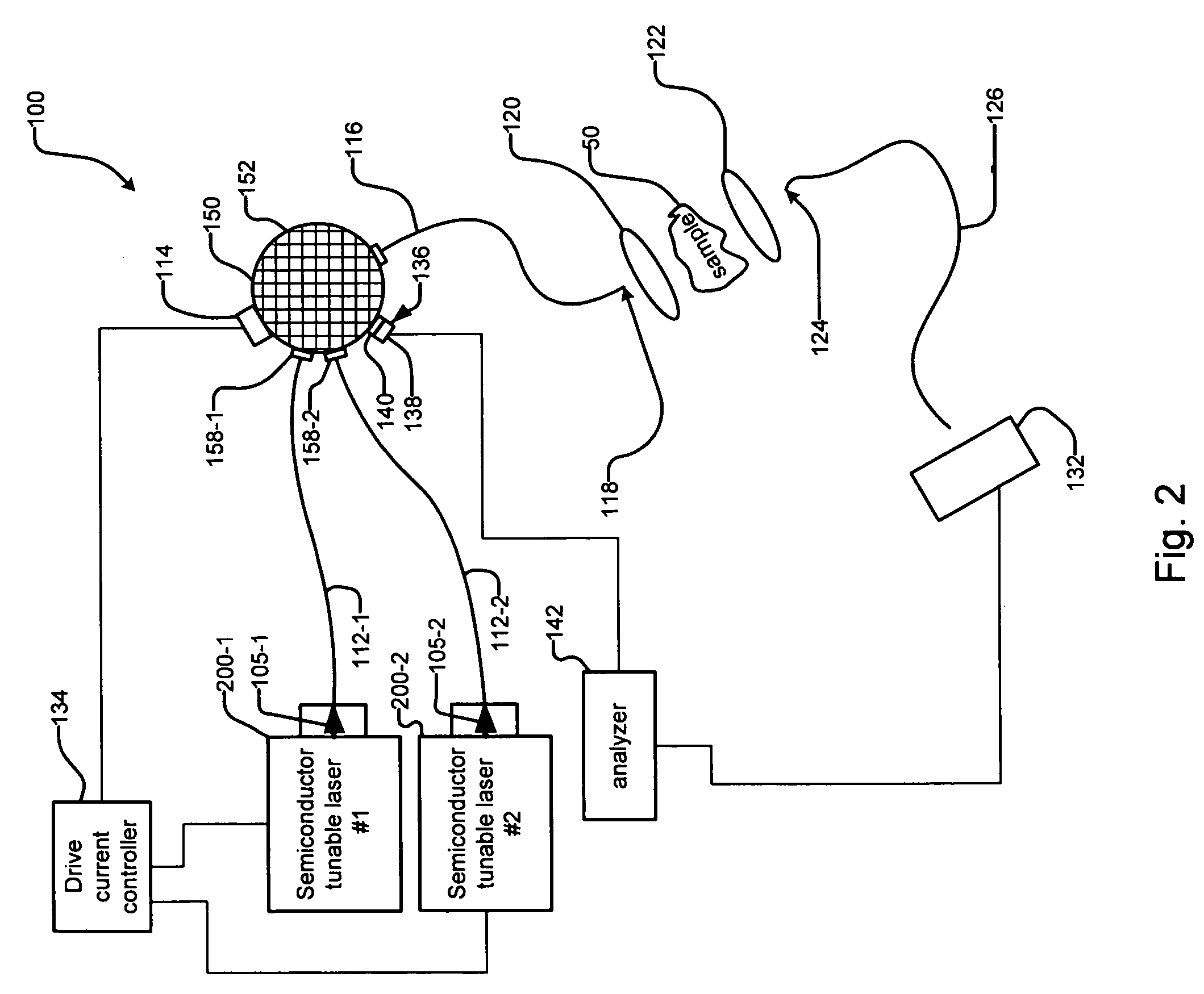Method and system for reducing parasitic spectral noise in tunable semiconductor source spectroscopy system
a spectroscopy system and semiconductor technology, applied in the field of reducing parasitic spectral noise in tunable semiconductor source spectroscopy system, can solve the problems of small changes in the way the tunable signal is interpreted, phase interference noise at the finite aperture detector, and parasitic spectral noise in spectroscopy system, so as to improve operation and assembly, the effect of reducing any spectral artifa
- Summary
- Abstract
- Description
- Claims
- Application Information
AI Technical Summary
Benefits of technology
Problems solved by technology
Method used
Image
Examples
Embodiment Construction
[0020]FIG. 1 illustrates a spectroscopy system 100, which has been constructed according to the principles of the present invention.
[0021]Generally, the system 100 includes a semiconductor tunable laser 200. This semiconductor tunable laser has a semiconductor gain medium, such as semiconductor optical amplifier. Often these semiconductor gain mediums emit light in only one or a few spatial modes and are fiber coupled. In the example, the generated tunable optical signal 105 is coupled into an optical fiber 112 by a coupler 110.
[0022]Because of the limited number of spatial modes of the semiconductor tunable laser 200, the optical fiber 112 is often a single mode fiber. Thus, it only supports and propagates a single spatial mode.
[0023]In one further implementation, the optical fiber 112 may further be polarization controlling fibers, such as polarization maintaining or polarization stripping (only propagates a single polarization) fiber. Specifically, such a system is illustrated in...
PUM
| Property | Measurement | Unit |
|---|---|---|
| optical length | aaaaa | aaaaa |
| optical length | aaaaa | aaaaa |
| optical length | aaaaa | aaaaa |
Abstract
Description
Claims
Application Information
 Login to View More
Login to View More - R&D
- Intellectual Property
- Life Sciences
- Materials
- Tech Scout
- Unparalleled Data Quality
- Higher Quality Content
- 60% Fewer Hallucinations
Browse by: Latest US Patents, China's latest patents, Technical Efficacy Thesaurus, Application Domain, Technology Topic, Popular Technical Reports.
© 2025 PatSnap. All rights reserved.Legal|Privacy policy|Modern Slavery Act Transparency Statement|Sitemap|About US| Contact US: help@patsnap.com



